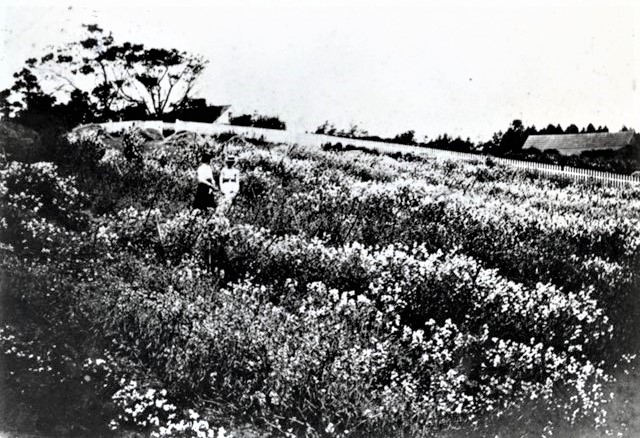It’s easy to associate pears with Ukiah, apples with the Anderson Valley, hops with Hopland, and grapes with just about every inland valley, but how many of us connect peas with the Mendocino coast? Surprisingly enough, old-fashioned garden peas were once a profitable crop here.
Early settlers quickly learned that the coastal marine terraces were excellent places to grow root crops like beets, turnips and potatoes, but it took the straightened circumstances of the Depression to induce the San Diego Fruit & Produce Company to plant peas up near Westport.
It was common knowledge that peas could be grown almost anywhere with irrigation or summer rains, but it took the folks at San Diego Fruit to figure out that late peas—maturing in September and October—could be grown on the coast without irrigation. Acres of peas were sown north of the Ten Mile River, in Newport, in Kibesillah on the Filosi Ranch, and all the way up to Westport. Once the viability of the crop was established, peas were grown around Greenwood (Elk) and all along the coastal plain down to the mouth of the Garcia River. At one time, upwards of 400 acres were under pea cultivation up and down the coast.

Eva MacKerricher Cotton and Edith MacKerricher in a field of peas on their parents’ ranch in Laguna, near Cleone
Peas from the south coast could be shipped fresh to San Francisco on a daily basis, but the crop from farther north had to be canned. A packing house was established in Fort Bragg, with an ice storage facility nearby. A 1932 Beacon article noted that 99 railroad cars full of Verigreen Canned Peas—“of extra fine quality”—left from Fort Bragg that year and were “meeting with good demand in eastern cities.” In 1933, 92 cars headed east.
Hundreds of seasonal workers earned salaries in the pea fields and the packing house. In 1933, a tent campground for itinerant pea pickers sprang up near Elk at harvest time. The Beacon reported that about 20 tents were erected, and “it is quite an active little village.” People came from the San Joaquin Valley, Idaho, Washington, and Oregon to pick the peas.
Local people got in on the picking and packing action too. As a teenager, Clarence Simpson of Fort Bragg went from killing gophers for farmers for ten cents a pelt (although Mrs. MacCallum paid him $1 per pest in her rose garden) to picking peas at the Todd Ranch in Noyo: “The first day I picked, I think, 12 hampers. But some of those guys that was workin’ all the time for the company, they was beatin’ me. I couldn’t figure out how the hell they was pickin’ more than I was ‘cause I was tearin’ into it. By the time I was finished that season, tho, I think it was 22 hampers I was up to.”
Workers got $1 per day for weeding and cultivating with a short hoe. The peas were picked into hampers about the size of a garbage can; accomplished pickers could fill around 20 hampers in one day. One hamper would earn a picker 15 cents in 1932, but in 1934 the pickers struck, demanding a raise to 18 cents per hamper. By 1935, they were making 25 cents per hamper.
That new cash crop and hard work got many people through the first grim years of the Depression, but gradually New Deal programs took the place of trapping gophers and picking peas. By the late 1930s, articles about the pea crop had disappeared from the Beacon and Advocate-News, replaced by A.A. Heeser’s optimistic and upbeat editorials on the benefits of FDR’s projects and programs. The pea packing house in Fort Bragg became the Co-Op Feed warehouse, and San Diego Fruit & Produce withdrew to areas more conducive to bountiful year-round crops.
To read more about Mendocino during the Depression, stop by the Kelley House and pick up a copy of Bridges, Huckleberries and Robin Stew, by Robert Winn, Mendocino Historical Review XIV, Winter/Spring, 1989-90. The museum is open from 11:00 AM to 3:00 PM Thursday through Sunday. You can contact the curator at curator@kelleyhousemuseum.org to make an appointment for more information. Walking tours of the historic district depart from the Kelley House regularly.